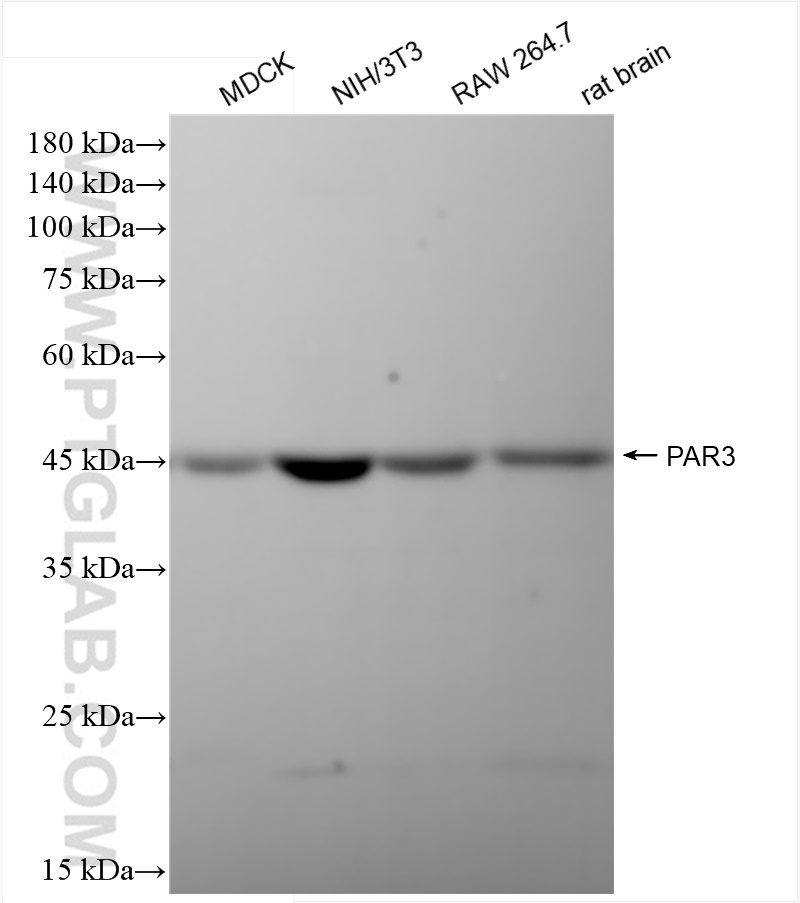验证数据展示
经过测试的应用
| Positive WB detected in | MDCK cells, NIH/3T3 cells, RAW 264.7 cells, rat brain tissue |
推荐稀释比
| 应用 | 推荐稀释比 |
|---|---|
| Western Blot (WB) | WB : 1:5000-1:50000 |
| It is recommended that this reagent should be titrated in each testing system to obtain optimal results. | |
| Sample-dependent, Check data in validation data gallery. | |
发表文章中的应用
| WB | See 1 publications below |
| IF | See 1 publications below |
产品信息
84593-1-RR targets PAR3 in WB, IF, ELISA applications and shows reactivity with human, mouse, rat samples.
| 经测试应用 | WB, ELISA Application Description |
| 文献引用应用 | WB, IF |
| 经测试反应性 | human, mouse, rat |
| 文献引用反应性 | human, mouse |
| 免疫原 |
Peptide 种属同源性预测 |
| 宿主/亚型 | Rabbit / IgG |
| 抗体类别 | Recombinant |
| 产品类型 | Antibody |
| 全称 | coagulation factor II (thrombin) receptor-like 2 |
| 别名 | F2RL2, Proteinase-activated receptor 3, PAR-3, PAR 3, Coagulation factor II receptor-like 2 |
| 计算分子量 | 374 aa, 43 kDa |
| 观测分子量 | 45 kDa |
| GenBank蛋白编号 | BC093648 |
| 基因名称 | PAR3 |
| Gene ID (NCBI) | 2151 |
| RRID | AB_3672089 |
| 偶联类型 | Unconjugated |
| 形式 | Liquid |
| 纯化方式 | Protein A purfication |
| UNIPROT ID | O00254 |
| 储存缓冲液 | PBS with 0.02% sodium azide and 50% glycerol, pH 7.3. |
| 储存条件 | Store at -20°C. Stable for one year after shipment. Aliquoting is unnecessary for -20oC storage. |
背景介绍
PAR3 is a crucial protein involved in the establishment and maintenance of cell polarity across various species. It plays a significant role in organizing cellular structures and functions, particularly in epithelial and neuronal cells. PAR3 has been implicated in various aspects of cancer biology. It can act as a tumor suppressor in epithelial cancers, and its expression or mutations have been associated with the progression and behavior of glioblastoma, pancreatic cancer, and other malignancies.
实验方案
| Product Specific Protocols | |
|---|---|
| WB protocol for PAR3 antibody 84593-1-RR | Download protocol |
| Standard Protocols | |
|---|---|
| Click here to view our Standard Protocols |


